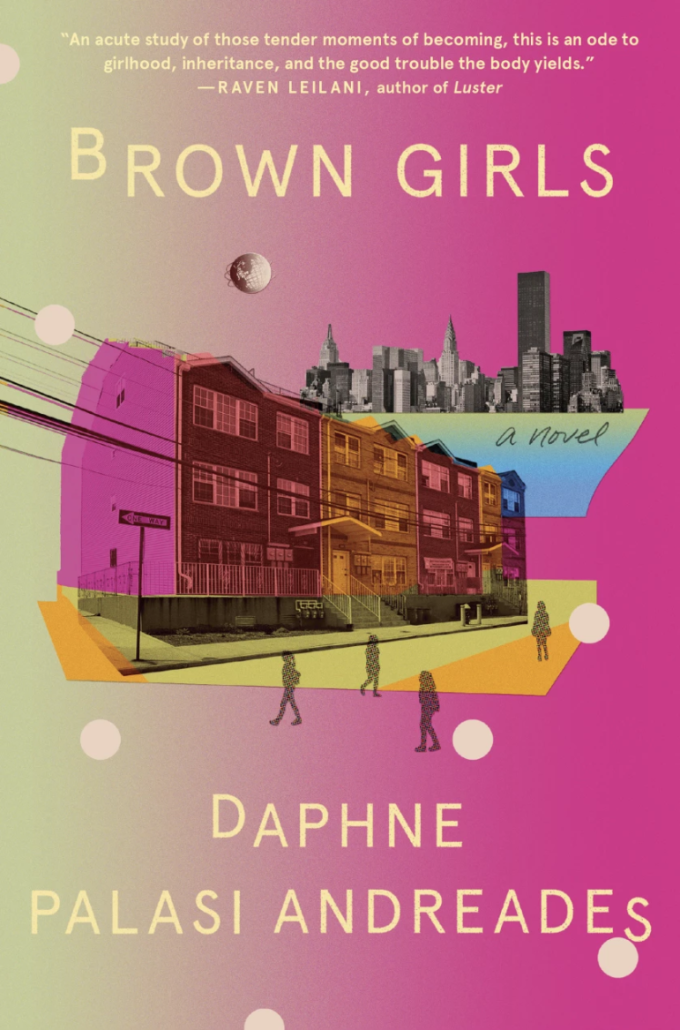‘Brown Girls’ reflects the complexities of American identity

From Nella Larsen’s “Passing” to Maxine Hong Kingston’s “Woman Warrior: Memoirs of a Girlhood Among Ghosts,” the American literary tradition has seen well over a century of diverse works from women of color writers who are constantly redefining the canon. One especially modern addition to the catalog was recently released: Daphne Palasi Andreades’ novel “Brown Girls.”
Published Jan. 4, “Brown Girls” follows the interwoven stories of a group of women of color from Queens as they navigate their complex identities and find their voice and power in America. Unpacking “Brown Girls” makes for riveting discussion, prompting analysis of how Andreades maintains and challenges the nation’s literary traditions through her debut novel.
As Andreades introduces the lively borough of Queens from the “scent of bubbling oil and smoke” to “sun-warmed concrete,” she immerses the reader within this multicultural setting. Portraying the beautiful chaos of the community, the novel transforms into a poetic love letter to Andreades’ home city.
In addition to encapsulating this bustling environment, Andreades gives Queens a distinct voice through the collective narration of brown girls as they recount their attempts to advance in society while simultaneously maintaining their sense of identity. Through these narrative techniques, Andreades manifests the American literary tradition, originating from Ralph Waldo Emmerson, of focusing on the culture, dialect and environment of ordinary people to authentically illustrate the American experience.
While the narrative specifically concentrates on the characters living in Queens, Andreades uses their stories to capture the universal experiences of women from marginalized communities. However, as the stories and feelings of the brown girls overlap, readers may feel dissatisfied with the lack of specificity and detail, which could help differentiate the experiences of these characters from various backgrounds.
While some may critique Andreades’ universal focus, her attempt to challenge and diversify the mainstream American experience is admirable. Dominated by white narratives, the “universal” fails to live up to its name, as it does not encapsulate everyone’s experiences, especially minorities. By highlighting the day-to-day racism, classism and misogyny brown girls face, Andreades succeeds in representing the obstacles people of color constantly encounter in America.
Andreades directly addresses this tension between specificity and universality within the chapter “Art.” Here, Andreades explores the complicated and uncomfortable relationship artists from marginalized communities have with art itself. Expected to translate the experiences in “palatable [and] acceptable” ways, these artists feel trapped with the “prison” of society’s presumptions for their artwork.
Readers can appreciate Andreades’ ability to reflect the anxieties of marginalized artists in “Art.” However, Andreades struggles to escape the confining limitations of artistic tradition imposed on people of color. Andreades’ use of a collective narrator (“we,” “our”) and focus on developing a universal story calls into question whether Andreades challenges or upholds society’s horizon of expectation for marginalized artists.
Concentrating on the characters’ narrative of navigating their generational and personal trauma, Andreades follows the footsteps of other American writers such as Toni Morrision and Quiara Alegría Hudes, who deconstruct the concepts of tragedy within American society. Through this trauma, Andreades once again demonstrates how she tries to balance the specific with the universal. While every person has a different and personal interaction with trauma, the universal pain and agony associated with trauma helps people develop a sense of empathy and kinship with each other.
“Brown Girls” explores both the destructive and unifying force of trauma, as the novel follows the characters’ journey in navigating and contextualizing their trauma. Their trauma forces them to leave the neighborhoods of Queens to create new lives, disconnected from their past and their community. However, simultaneously, the characters’ trauma pushes them to reconnect with their hometown and childhood friends. Instead of denying trauma or keeping it hidden, Andreades grapples with it and explores how empowerment and empathy can transform trauma into a powerful unifying tool.
While readers may come away from the novel with various perspectives and opinions on its exploration of the brown girl experience, the power of Andreades’ lyrical and multilayered prose, which reflects the complexities of the American identity, is irrefutable.

